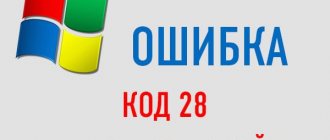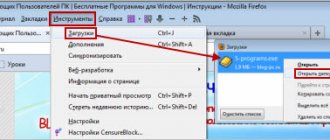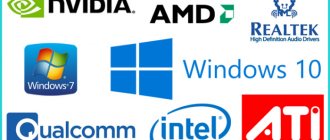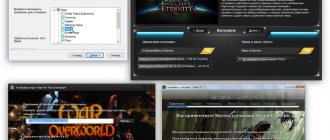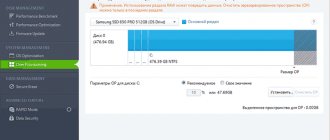Description and features
In order to get to know the described software better, we will present its main capabilities:
- Using this graphic library, you can implement functions for describing primitives of the lower level of the hierarchy.
- Functions for describing light sources are supported.
- Functions for setting attributes.
- With the help of technology, the best visualization is realized on a particular hardware.
- There is also a technology for geometric transformations.
You can consider the capabilities of the library described in the article for a long time. But in order not to waste time, let's get straight to the point and talk about how to download OpenGL 2 for Windows 10 for free, as well as how to install this software correctly.
What is OpenGL?
OpenGL ( Open G raphics Library ) is mainly considered as an API ( Application Programming Interface ) that provides a large set of functions that we can use to control graphics and images. More specifically, OpenGL is a specification developed and maintained by the Khronos Group .
The OpenGL specification defines what the result/output of each function should be and how it should be executed. But the implementation of this specification already depends on specific developers. Since the OpenGL specification does not provide us with implementation details, in fact, developed versions of OpenGL can have different implementations as long as their results comply with the specification (and are therefore the same for the user).
The people who develop OpenGL libraries are usually video card manufacturers. Each video card you purchase supports certain versions of OpenGL, designed specifically for that line of video cards. When using software from Apple, the OpenGL library is supported, in fact, by Apple developers, and on Linux there is a whole set of versions of graphics providers and adaptations from the open source community of these libraries. This also means that whenever OpenGL exhibits strange behavior that it shouldn't, it is most likely the fault of the video card manufacturers (or whoever developed/maintains the library).
Since most OpenGL implementations are created by video card manufacturers, whenever there is a bug in the implementation, it is usually resolved by updating your video card drivers. These drivers include the latest versions of OpenGL that your graphics card supports. This is one of the main reasons why it is always recommended to update your graphics drivers.
Khronos publicly posts all specification documents for all versions of OpenGL. The interested reader can find here , where they can delve into the details of OpenGL (note that this specification mostly just describes results, not implementations). This specification also provides excellent reference information for understanding what the output of functions should be.
How to use
So, now we will analyze the process of downloading the program, as well as its installation, in two stages.
Download and Install
Downloading should only be done from the official website. This is completely free software; therefore, we do not recommend downloading software from third-party sources. Let's proceed as follows:
- To update OpenGL, go a little lower and click the button, which will automatically start the download.
- Unpack the installation file and run it by double-left clicking.
- Following the prompts that will appear during the installation process, we install our software.
Also watching: Java 7 for Windows 7
For the most correct operation of OpenGL, you must install the latest driver for your video card. In the case of NVIDIA, your best bet is software called GeForce Experience.
Operating instructions
The library that you downloaded and installed a step earlier does not provide any additional settings after installation. The maximum that may be required from the user to enable OpenGL is to restart the personal computer or laptop.
Books
In Russian
D. Schreiner - OpenGL Redbook - download;
The book is the official guide to learning OpenGL. The latest editions are almost completely different from the original versions; the author updates it in accordance with changes in versions. According to hundreds of experts working with Open GL, this book is the first thing anyone who wants to learn the technology should pick up.
D. Wolf - Open GL 4. Shader language. Recipe book (2015) - download;
This book covers the entire spectrum of GLSL programming techniques, from basic shaders—vertex and fragment shaders—to geometry, compute, and tessellation shaders. After reading it, you will be able to use the GPU to solve a wide variety of problems.
D. Ginsburg - OpenGL ES 3.0. Developer's Guide (2014) - buy;
In this book, the author reviews the entire API and language for writing shaders. You'll also find tips on optimizing performance, maximizing API and GPU efficiency, and making full use of OpenGL ES in a wide range of applications.
V. Porev - Computer graphics (2002) - download;
The book discusses ways to work with computer graphics, common problems, and provides examples of programs in C++.
In English
P. Shirley - Fundamentals of Computer Graphics (2009) - download;
The book is intended to be an introduction to computer graphics at a basic level. The authors cover the mathematical foundations of computer graphics with an emphasis on how to apply these foundations to develop efficient code.
E. Angel - Interactive computer graphics - buy;
This book is intended for all students studying computer science and programming in depth. Computer animation and graphics are not as difficult as they used to be. Following his statement, the author wrote the book in the most understandable language.
G. Sellers - Superbible Open GL (2015) - buy.
The latest edition of the book is a full-fledged tutorial on Open GL 4.5. This guide covers the entire aspect of modern development and is one of the most recommended by professionals.
Advantages and disadvantages
Now that we are done with theory and practice, let's also look at additional points in the form of positive and negative features of OpenGL 2.
Pros:
- Using the library allows you to run games or multimedia applications based on this technology with maximum performance.
- Excellent performance.
- Good optimization for Windows 10 and other Microsoft operating systems.
- Optimal use of PC hardware resources.
Minuses:
- This technology in some cases may outperform Direct X.
Download
For the average user, this technology has no disadvantages. It improves PC performance without overloading the system. The only controversial drawback can only be felt by programmers - OpenGL uses a low-level API, which makes it more difficult to work with than DirectX. However, it is low-level development that provides high performance and stability.
sView stereo player is free and supports a wide range of devices, including:
- Anaglyph glasses.
- Monitors with interlace polarization Zalman, LG, Envision.
- Shutter glasses (requires NVIDIA 3D Vision, AMD HD3D compatible hardware or professional graphics card).
- Mirror stereo systems (“Double Output” for industrial and “Mirror Output” for homemade designs).
- 2-projector systems (“Double Output”).
- Oculus Rift prototype.
- Outdated equipment (iZ3D, Sharp, SeaReal, Vuzix HMD monitors).
Opens major video and image storage formats (including AVI, Matroska, Windows Media, JPS, MPO). From the original functions:
- NPAPI plugin for Firefox, Chrome and Opera browsers for viewing stereo photo galleries on the Internet.
- Output of panoramas - spherical and cubemaps (both stereo and mono).
- Options for detailed image settings (horizontal/vertical/angular parallax; rotation; scaling; broadcast).
- User interface available in stereo and full screen mode.
The program supports Russian for the interface.
System requirements:
- Operating system Windows XP/Vista/7/8/10, there are versions for Linux and Mac OS X (versions 10.6.8 and later)
- Video card and driver supporting OpenGL 2.1
- Stereo hardware and drivers (such as NVIDIA 3D Vision)
- Licensing type: FreeWare
FrameView
A proprietary utility from NVIDIA that allows you to display additional information about the operation of the video card in the overlay and evaluate the performance and power consumption of the video card. The output is carried out in one of the quarters of the screen.
The program offers several monitoring and statistics tools, and is mostly intended for enthusiasts and streamers. The main functionality allows you to:
- determining the frame rate during rendering, i.e. at the beginning of graphics processing, and the frequency of displayed frames, i.e. at the end of the processing process;
- Frame rate scores at the 90th, 95th, and 99th percentiles. Reviewers typically use the 99th percentile. If it is close to the average value, then we can say that the game is displayed smoothly and without jerks;
- launching benchmark mode. In this mode, pressing a hotkey starts capturing statistical data for a previously preset period of time. To maximize performance, the overlay is disabled for the duration of the benchmark.
To estimate energy consumption in games, the utility allows you to display the consumption of the GPU. This value is coded in the overlay as "CHP". It is also possible to determine the power consumption of the entire video card. This parameter is called “TGP” and it does not take into account the power consumption of devices connected to the USB-C output of GeForce RTX video cards.
In addition, there is a definition of specific energy consumption, “PPW”. This value represents the performance per watt over the last few seconds, and is calculated using the formula: F/J = (F/S) / (J/S)
Procedure for manual download and update:
This built-in OpenGL driver must be included with the Windows® operating system or be available for download through Windows® Update. The built-in driver supports the core functionality of your OpenGL hardware.
How to perform automatic download and update:
Recommendation: In general, we highly recommend that most Windows users (unless they are advanced users) download a tool like DriverDoc to update their OpenGL drivers. Our driver update utility will do all the necessary work, namely, automatically download and update the necessary OpenGL drivers.
A driver update tool like DriverDoc allows you to update not only your drivers, but also the rest of your PC's drivers. With a comprehensive database of over 2,150,000 drivers (updated daily), you can be sure you always have the drivers you need for your device.
Install optional products - DriverDoc (Solvusoft) | | | |
OpenGL Update Frequently Asked Questions
What are OpenGL device drivers for?
Drivers are mini-programs developed by OpenGL that enable OpenGL hardware to communicate effectively with your operating system.
What operating systems are compatible with OpenGL drivers?
Operating systems supported by OpenGL include Windows.
How to update OpenGL drivers?
You can update OpenGL hardware drivers manually using Device Manager or automatically using driver update software.
What are the benefits and risks of updating OpenGL drivers?
Updated drivers unlock features, increase PC performance, and expand your hardware's functionality. Installing the wrong OpenGL drivers can cause system crashes, poor performance, and general instability.
About the author:
Jay Geater is President and Chief Executive Officer of Solvusoft Corporation, a global software company focused on innovative service offerings. He has a lifelong passion for computers and loves everything related to computers, software and new technology.
FurMark
Benchmark and stress test of video cards using OpenGL. Main features:
- two levels of stress testing of the video card, the XtremeBurning mode creates a load close to the maximum on the graphics processor, primarily on shader units;
- GPU temperature measurement during benchmark/stress test;
- the ability to log results and temperature readings to a file;
- support for launching from the command line, including in batch mode;
- protection mode against certain types of fraud in performance measurement;
The project website maintains a results database where you can send your results obtained with anti-cheat protection enabled (Contest Mode).
System requirements:
- Operating system Windows XP/Vista/7
- Video card supporting OpenGL 2.0
- Licensing type: FreeWare
A benchmark based on the Unigine engine, characterized by the active use of new graphics technologies offered in DirectX 11 and OpenGL 3.x. The main “trick” is the work of tesellation - a mechanism for automatically complicating the geometry of objects, which significantly increases the quality of graphics, but also loads even the latest graphics processors to the limit. Also, this is one of the first benchmarks with built-in support for stereo modes, including NVIDIA 3D Vision. Batch launch mode from the console is supported.
System requirements:
- Operating system Windows XP/Vista/7, Linux
- Video card based on GeForce 7X00/Radeon 2X00 and later, GeForce 4X0/Radeon 5X00 for tesellation
- iZ3D or NVIDIA 3D Vision stereo driver for stereo
- Installed driver NVIDIA 190.xx / ATI 9.x or later
- .NET FrameWork library package version 2.0 for Windows installed on the system
- OpenAL libraries installed on the system
- DirectX 9.0 and higher
- Licensing type: FreeWare
A benchmark that simulates the development of realistic 3D scenes and special effects for the film industry, based on the engine of the famous product CINEMA4D. At the first stage, the performance of the central processor when creating 3D scenes is measured, while optimizations for multi-core/multi-processor systems are actively used. At the second stage, the performance of the video card when displaying complex scenes is measured. The test uses 64-bit processor instructions and complex OpenGL shaders.
System requirements:
- Operating system Windows XP/XP-64/2003/Vista/7/2008, MacOS 10.4 and higher
- 1 GHz processor with support for SSE2 extensions
- 1 GB RAM
- Video card supporting OpenGL 2.0 and 128 MB of video memory
- Licensing type: FreeWare





